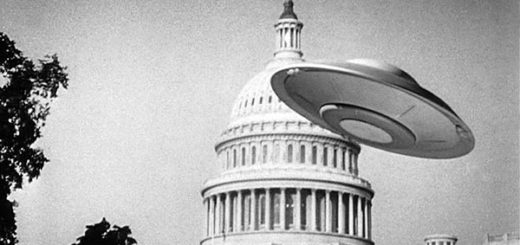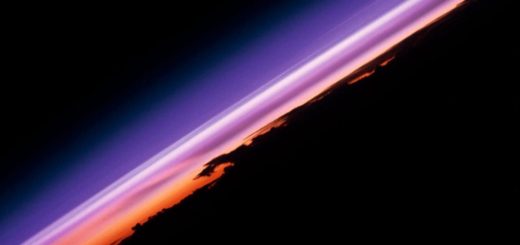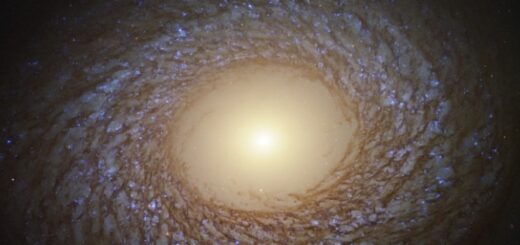Don’t panic! Milky Way WILL crash into neighbouring galaxy… but not for another four billion years

The enormous crash, which will fling the Sun into a different orbit, is now an absolute certainty, NASA astronomers announced
The Milky Way will smash into the neighbouring Andromeda galaxy in a titanic head on cosmic collision – in four billion years time.
The galaxy crash will be so huge it will fling the Sun into a different orbit.
The enormous crash is now an absolute certainty NASA astronomers announced last night.
It is likely the Sun will be flung into a new region of our galaxy, but our Earth and solar system are in no danger of being destroyed.
“Our findings are statistically consistent with a head-on collision between the Andromeda galaxy and our Milky Way galaxy,” said Roeland van der Marel of the Space Telescope Science Institute (STScI) in Baltimore.
The prediction came through painstaking NASA Hubble Space Telescope measurements of the motion of Andromeda, which also is known as M31.
The Andromeda galaxy is now 2.5 million light-years away, but it is inexorably falling toward the Milky Way under the mutual pull of gravity between the two galaxies and the invisible dark matter that surrounds them both.
It is hurtling towards us at 250,000 mph travelling the distance between Earth and the Moon in an hour.
“After nearly a century of speculation about the future destiny of Andromeda and our Milky Way, we at last have a clear picture of how events will unfold over the coming billions of years,” said Sangmo Tony Sohn of STScI.
“The scenario is like a baseball batter watching an oncoming fastball. Although Andromeda is approaching us more than two thousand times faster, it will take four billion years before the strike.”
The star forming area in the Milky Way, scientists produced the picture by combining infra-red light images from two telescopes in the northern and southern hemispheres
Don’t cry over spilt Milk-y way: The cosmic crash won’t happen for a while yet (Image: PA)
Computer simulations derived from Hubble’s data show that it will take an additional two billion years after the smash for the interacting galaxies to completely merge under the tug of gravity and reshape into a single elliptical galaxy similar to the kind commonly seen in the local universe.
Although the galaxies will plough into each other, stars inside each galaxy are so far apart that they will not collide with other stars during the encounter.
However, the stars will be thrown into different orbits around the new galactic centre.
Simulations show that our solar system will probably be tossed much farther from the galactic core than it is today.
To make matters more complicated, M31’s small companion, the Triangulum galaxy, M33, will join in the collision and perhaps later merge with the M31/Milky Way pair.
Previously, it was unknown whether the far-future encounter will be a miss, glancing blow, or head-on smashup.
The Hubble Space Telescope team, led by van der Marel, conducted extraordinarily precise observations of the sideways motion of M31 that remove any doubt that it is destined to collide and merge with the Milky Way.
“This was accomplished by repeatedly observing select regions of the galaxy over a five- to seven-year period,” said Jay Anderson of STScI.
“In the ‘worst-case-scenario’ simulation, M31 slams into the Milky Way head-on and the stars are all scattered into different orbits,” said team member Gurtina Besla of Columbia University in New York, N.Y.
“The stellar populations of both galaxies are jostled, and the Milky Way loses its flattened pancake shape with most of the stars on nearly circular orbits.
“The galaxies’ cores merge, and the stars settle into randomized orbits to create an elliptical-shaped galaxy.”
The Hubble observations and the consequences of the merger are reported in three papers that will appear in an upcoming issue of the Astrophysical Journal.



 Creators of mankind
Creators of mankind Description of “Tall white aliens”
Description of “Tall white aliens” Where they came from?
Where they came from? About hostile civilizations
About hostile civilizations The war for the Earth
The war for the Earth “Tall white aliens” about eternal life
“Tall white aliens” about eternal life Video: “Nordic aliens”
Video: “Nordic aliens” Aliens
Aliens Alien encounters
Alien encounters The aliens base
The aliens base UFO
UFO Technology UFO
Technology UFO Underground civilization
Underground civilization Ancient alien artifacts
Ancient alien artifacts Military and UFO
Military and UFO Mysteries and hypotheses
Mysteries and hypotheses Scientific facts
Scientific facts


















